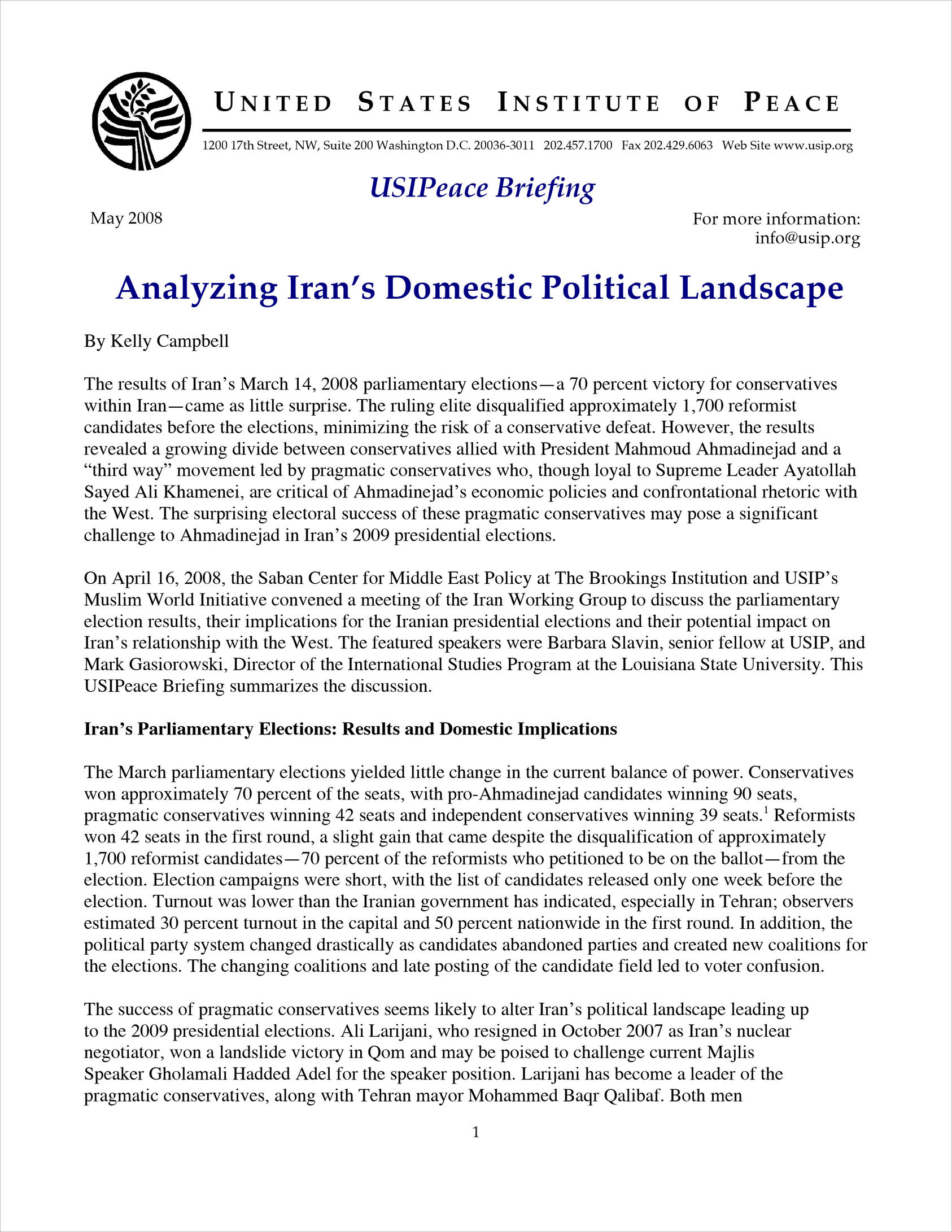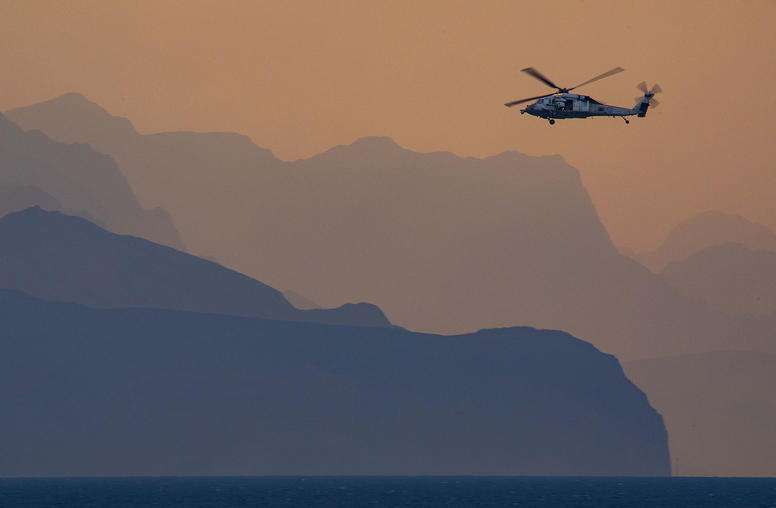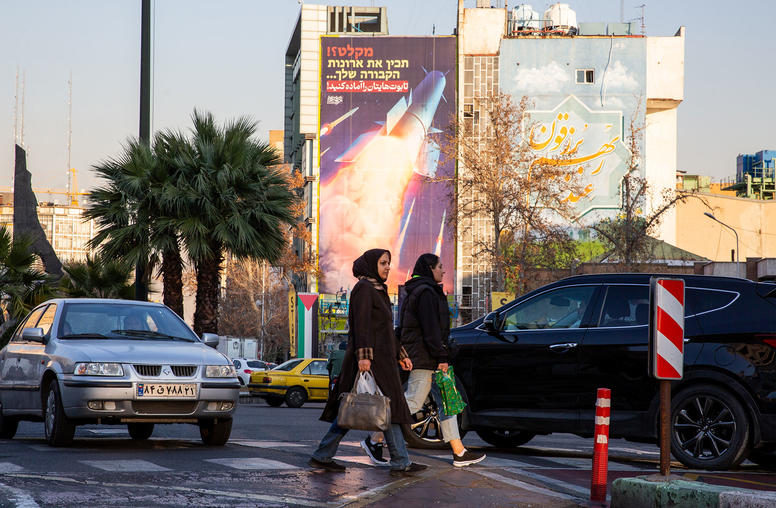Analyzing Iran's Domestic Political Landscape
The surprising success of Iran's "third way" movement in the March 2008 parliamentary elections may pose a significant challenge in the country's 2009 presidential election.

The results of Iran's March 14, 2008 parliamentary elections—a 70 percent victory for conservatives within Iran—came as little surprise. The ruling elite disqualified approximately 1,700 reformist candidates before the elections, minimizing the risk of a conservative defeat. However, the results revealed a growing divide between conservatives allied with President Mahmoud Ahmadinejad and a "third way" movement led by pragmatic conservatives who, though loyal to Supreme Leader Ayatollah Sayed Ali Khamenei, are critical of Ahmadinejad's economic policies and confrontational rhetoric with the West. The surprising electoral success of these pragmatic conservatives may pose a significant challenge to Ahmadinejad in Iran's 2009 presidential elections.
On April 16, 2008, the Saban Center for Middle East Policy at The Brookings Institution and USIP's Muslim World Initiative convened a meeting of the Iran Working Group to discuss the parliamentary election results, their implications for the Iranian presidential elections and their potential impact on Iran's relationship with the West. The featured speakers were Barbara Slavin, senior fellow at USIP, and Mark Gasiorowski, director of the International Studies Program at the Louisiana State University. This USIPeace Briefing summarizes the discussion.
Iran's Parliamentary Elections: Results and Domestic Implications
The March parliamentary elections yielded little change in the current balance of power. Conservatives won approximately 70 percent of the seats, with pro-Ahmadinejad candidates winning 90 seats, pragmatic conservatives winning 42 seats and independent conservatives winning 39 seats.1 Reformists won 42 seats in the first round, a slight gain that came despite the disqualification of approximately 1,700 reformist candidates—70 percent of the reformists who petitioned to be on the ballot—from the election. Election campaigns were short, with the list of candidates released only one week before the election. Turnout was lower than the Iranian government has indicated, especially in Tehran; observers estimated 30 percent turnout in the capital and 50 percent nationwide in the first round. In addition, the political party system changed drastically as candidates abandoned parties and created new coalitions for the elections. The changing coalitions and late posting of the candidate field led to voter confusion.
The success of pragmatic conservatives seems likely to alter Iran's political landscape leading up to the 2009 presidential elections. Ali Larijani, who resigned in October 2007 as Iran's nuclear negotiator, won a landslide victory in Qom and may be poised to challenge current Majlis Speaker Gholamali Hadded Adel for the speaker position. Larijani has become a leader of the pragmatic conservatives, along with Tehran mayor Mohammed Baqr Qalibaf. Both men challenged Ahmadinejad for the presidency in 2005 and have increased their criticism of the president on economic issues and his provocative posture toward the West, particularly toward the U.S. Larijani is a technocrat who is expected to have a leading role in parliament. One meeting participant suggested that, if elected speaker, Larijani might initiate a diplomatic outreach effort to the West. Qalibaf, by most accounts a shrewder politician than Larijani, performed well in the 2005 presidential elections. His visibility and popularity, especially in Tehran, has increased, and he seems poised to challenge Ahmadinejad for the presidency again in 2009. The outgoing speaker of the parliament, Hadded Adel, has also been mentioned as a possible presidential candidate.
Larijani, Qalibaf and Hadded Adel are all close to Ayatollah Khamenei (Hadded Adel's daughter is married to Khamenei's son, Mojtaba), leading some experts to speculate as to whether Khamenei will support Ahmadinejad in the 2009 elections or choose another candidate, such as Qalibaf. Thus far, Khamenei has not joined others in directly criticizing Ahmadinejad, but certain developments may cause him to reconsider his position. These possibilities include a further deterioration in Iran's economic situation or Ahmadinejad taking actions that could increase the risk of a military confrontation with the U.S. or Israel, which Khamenei wants to avoid. Khamenei may also be influenced by Qalibaf's or Larijani's criticisms of Ahmadinejad on these issues.
Despite profits from rising oil prices, Iran's economy has worsened in nearly every measure since Ahmadinejad took office in 2005: unemployment is between 20 and 30 percent; there is a growing income disparity; and inflation has risen to 22 percent (as of March 2008) from 12 percent at the time of the 2005 elections. A housing bubble in Tehran has led to soaring apartment costs, in part because Iranians do not feel confident to invest in anything aside from real estate. Although the high inflation rate did not prevent Iranians from supporting pro-Ahmadinejad candidates in the parliamentary elections, if it continues at this or a higher rate, his popularity could be undermined in the presidential elections.
Implications for Iran-U.S. Relations
While Iranian attitudes toward the U.S. have hardened, meeting participants suggested that Iran's leaders have not closed off the possibility of negotiations. Since the Bush administration did not act on Iranian overtures, indications are that Tehran is waiting for the new U.S. administration. The Iranian leadership may feel that it has weathered the worst of the sanctions and has found effective ways to elude many of them. Rather than resolving each issue individually, Iran most likely prefers a broad settlement of outstanding issues in a "grand bargain" fashion. Key Iranian demands would include: normalized relations with the U.S.; an end to international isolation and sanctions; acknowledgment of Iran's sovereignty and regional role; a security guarantee from the U.S.; and an end to U.S.-funded democracy promotion efforts. These items will not come without a cost to Iran, however, and certain costs—particularly regarding Iran's nuclear program—may be too high for Iran to pay without receiving substantial benefits in return.
The challenge for the U.S. will be to make a deal more acceptable for Iran. The U.S. would need to demonstrate to Iran's leadership that the status quo is not in its interest, and that a better option exists. The U.S. would also need to craft a package that Iran's leaders could sell domestically. Meeting participants suggested the U.S. engage in coercive diplomacy including not just the sticks the U.S. has relied on so far, such as sanctions, but substantial carrots as well. The U.S. would need to carefully create a package that made clear how Iran could benefit from moderating its behavior, particularly its support for Hamas, Hezbollah, and Shia militias in Iraq and its pursuit of nuclear capabilities. The U.S. would also need to accept the costs of such a deal, possibly including toning down or ceasing democracy promotion programs in Iran.
The domestic political impact of such negotiations would be a major consideration for Iran's leadership, regardless of who holds the presidency. Meeting participants noted that should Khamenei deal with the U.S., he could overcome potential domestic political obstacles to an agreement. Some meeting participants felt that Ahmadinejad would not rule out this prospect, betting that any Iranian leader would want to take credit for striking a "grand bargain" with the U.S. However, there is also a chance that an Ahmadinejad victory in 2009 could embolden him to implement more hard-line policies toward the West. Thus the chances of engaging the U.S. appear greater if a pragmatic conservative wins the presidency in 2009. The worst thing the U.S. could do, one participant argued, is to conduct a military action against Iran before Iran's presidential election. That would virtually guarantee an Ahmadinejad victory and would rally the Iranian people around him, requiring Khamenei to fully support Ahmadinejad. It would also destroy any chance of a negotiated agreement in the near future.
Absent a major military or diplomatic incident, the combination of a new U.S. administration and a potential new Iranian president coming into office in 2009 could create a brief window of opportunity for renewed diplomatic engagement between Iran and the U.S. One speaker suggested using the Sino-U.S. rapprochement during the 1970s as a model for how to proceed with Iran. Backchannel talks between Tehran and Washington would be necessary to establish principles for a broader, public discussion. Any negotiations would take years. However, major leadership changes in each country could serve as the catalyst for a shift in bilateral relations.
Notes
1. A second round of parliamentary elections took place April 25, 2008, after this meeting was held. Conservatives won most of 82 seats contested in the election, with approximately 12 seats going to reformists and 11 going to independent candidates. "Conservatives claim Iran election win," CNN.com, 26 April 2008, http://www.cnn.com/2008/WORLD/meast/04/26/iran.elections/
This USIPeace Briefing was written by Kelly Campbell, senior program assistant in the Center for Conflict Analysis and Prevention at the United States Institute of Peace. The views expressed here are not necessarily those of USIP, which does not advocate specific policies.
The United States Institute of Peace is an independent, nonpartisan institution established and funded by Congress. Its goals are to help prevent and resolve violent international conflicts, promote post-conflict stability and development, and increase conflict management capacity, tools, and intellectual capital worldwide. The Institute does this by empowering others with knowledge, skills, and resources, as well as by directly engaging in peacebuilding efforts around the globe.




